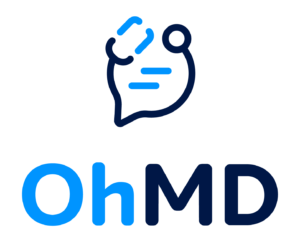Best Telehealth software
Our telehealth software guide includes some of the best software for businesses (pharmacies and health providers) and patients, which includes Spruce Health, Teladoc Health, Mend, and Maple Health.
Telehealth software buying guide:
There are several things to look for and consider when selecting telehealth software. We will address healthcare providers and patients separately.
Doctors/clinics looking for a software:
- Have a goal: Before you select a telehealth software ask yourself why you want to set up a telehealth service. Do you want a more efficient way to meet and manage your patients? Do you want to boost patient satisfaction? Or do you want the convenience telehealth software provides? These are just some of the questions you can ask yourself. If you do not have a clear reason why you want telehealth, then you probably do not need it.
- Communication options: There are a variety of communication methods in telehealth software. Some examples include video calls, phone calls, instant chats, emails, and fax. Consider the communication options you want to provide to your patients. This will help you narrow down your list of potential telehealth software to use.
- Pricing: Most telehealth providers will have pay-to-use accounts. The bill is usually charged monthly. These charged accounts offer more features than the free version. You should ensure that the account pricing fits in with your current operating budget.
- Additional features: Look for any additional features offered by the telehealth software. HIPAA-compliant video calls and instant chats is an important one; it ensures doctor-patient privacy is maintained. Another important feature is EHR (electronic health record) integration. This will make it easier for you to access patient medical records from hospitals and other clinics. The last feature to mention is the billing setup. This will determine how you will charge and collect payments from your patients.
Patients looking for an online doctor:
- Type of doctor: Before you select a telehealth provider, consider what kind of doctor you are looking for. Do you need a mental health expert, dentist, or surgeon? Or do you need a pediatrician for your child? The type of practice you require can influence how their telehealth service looks and operates.
- Services offered: This relates to the first point in the doctor/clinic category. Check to see what services and communication options the telehealth provider offers. Are there virtual meetings, online prescriptions, appointment scheduling/re-scheduling, or patient monitoring? Are you able to upload your medical records? These questions can play a major role in selecting an online doctor. Most people tend to go with online doctors who provide several services.

Hello Health

Klara

Hale

Whereby

Teladoc Health

Spruce Health

OhMD

Maple Health
What is telehealth?
Telehealth is the use of digital devices to provide remote healthcare. Instead of meeting your doctor at their clinic, telehealth allows you to meet with your healthcare provider from a variety of place, including work, school, and your home. Telehealth can be accessed via computers, tablets, or smartphones. Additionally, telehealth software combines several communication methods into one package. This includes instant messages, phone calls, video meetings, email, and fax.
There are several goals that telehealth software aims to achieve. They include:
• Increase access to services. This is important for people living in remote areas or for people with mobility issues.
• Aid healthcare providers in managing their patients’ files/records.
• Improve communication and coordination between patients and their doctors.
• Provide patients a safe way to meet their doctors during a global health crisis. A recent example would be the COVID-19 pandemic. Patients who were ill could still meet with their doctor remotely while they isolated.
Overall, telehealth software is praised for its convenience and efficiency.
What are the types of telehealth software?
There are three main types of telehealth software:
• Interactive telehealth: This also called live or real-time telehealth. Patients and their doctors communicate through video calls, instant chat, email, or by phone in real time. This type of telehealth is the most common form of the software. It is mostly used for urgent or primary care, follow ups, and managing medications.
• Store-and-forward: Also known as asynchronous telehealth. Doctors and their patients exchange medical information for diagnosis, prescriptions, and future appointments. Asynchronous telehealth is used in fields like radiology, ophthalmology, and dermatology.
• Remote patient monitoring: Also knows as telemonitoring. This type of telehealth uses devices to remotely collect and send a patient’s medical data to their doctor. It is used to monitor patients with chronic illness, high-risk patients, and patients who have recently been released from the hospital.
What are the benefits of telehealth?
There are numerous benefits to telehealth, the first of which is its conveniency. Instead of making the commute to a doctor’s office, people can now meet with their provider from their home. Or if your schedule is tight, you can meet with your doctor at work or school. Wait times tend to be lower with telehealth. Instead of sitting for hours on end in walk-in clinic, patients can talk with providers within minutes.
Telehealth increases accessibility to healthcare. People living in remote areas (farms or acreages) can easily meet with their provider; it saves them from long commutes. People with mobility issues can use telehealth to easily make and attend appointments. And since most patient accounts are free, telehealth offers an affordable way to access healthcare for people with reduced income.
From a practitioner’s perspective, telehealth can make healthcare more efficient and better coordinated. Doctors can use telehealth software to better organize patient records, schedule multiple appointments, and communicate with other clinicians. Another positive for providers is that telehealth enables primary doctors to easily consult medical specialists for things like x-rays or prescriptions. Telemedicine also improves the quality of patient care. Providers can easily follow up with their patients as well as provide remote patient monitoring to check a patient’s condition.
During global health crisis, telehealth is a safer way for doctors to see patients. A recent example of this was the COVID-19 pandemic. If people tested positive or displayed symptoms, they were advised to stay home and self-isolate. People were also advised to practise social distancing and stay at home as much as possible. With all their restrictions, using telehealth software became a safe and convenient way to make doctor appointments. People could meet their provider without the risk of getting sick or spreading COVID-19 to others.
What are the disadvantages of telehealth?
Even though telehealth has numerous benefits, there are some disadvantages. Technical issues are a frequent occurrence with telehealth software. Some examples include lost connection, poor audio or video quality, glitches, freezes, or website/app crashes. Most of the time, the issue is resolved quickly. Other times, the issue can persist and have a negative impact on user experience. The quality of video calls and other telehealth features depends on the person’s internet connection. The quality will suffer if the connection is poor.
Telehealth software can limit providers in what they can do for the patients. In some cases, a doctor will be unable to make a diagnosis or offer a treatment because it would require an in-person appointment. The only option the doctor has is to refer the patient to a clinic. Other times a physical exam is needed to make a full diagnosis. That is why telemedicine software is best used for minor to moderate medical issues. For serious health concerns, a physical appointment is the best approach.
Is telehealth here to stay?
Since the COVID-19 pandemic, more and more people have realized the convenience and efficiency telehealth software provides to healthcare. Previously, telehealth was viewed as a novel concept, an alternative to physical appointments. Now telemedicine software is viewed as the future of healthcare. Some people believe that telehealth will replace most consultations and other health appointments; it will act as a supplement to physical exams. In developing countries, telemedicine may be the only way people living in remote areas can access healthcare.
What are the regulatory requirements for telemedicine companies?
If the telehealth company provides communication between doctor and patient, it must be HIPAA compliant. HIPAA stands for the Health Insurance Portability and Accountability Act. The act protects sensitive health information. Healthcare providers and businesses are prohibited from revealing private health info to anyone except the patient and the patients’ representatives without consent. Another component of HIPAA is a Business Associate Agreement (BAA). A BAA is a legal contract between a healthcare provider and an organization that has access to personal health information. The organization provides services to or perform functions for the healthcare provider. Since telehealth software performs services for providers, they will require a BAA to operate. It ensures that the telehealth software will safeguard patient medical information.
Some disciplines have their own rules for telehealth. For example, psychologists must follow the guideline set by their organization/association.
Click here to see discipline-related rules for telehealth.
For more information on telehealth regulations, click here.
What are the most common features of telemedicine software?
All telehealth companies provide communication options. The most common option is video calls, followed closely by instant messaging. Phone integration and email are other communication options found in telehealth. To comply with HIPAA, telehealth companies use encrypted software for their communication methods.
Many telehealth companies have features that replicate the ones found in physical clinics. For example, some software have virtual waiting rooms for patients to que for their appointment. Providers can make clinical documentation for their patient’s medical records. Some telehealth companies have EHR (Electronic Health Record Integration). This aids providers in accessing and organizing patient medical records. Many telehealth services allow providers to make online prescriptions. The prescription can be
sent to a patient’s local pharmacy.
Other common features include:
• Billing: Some telehealth companies have a billing system that clinics can use to charge patients for consultations or services.
• Appointment scheduling: providers can use telehealth software to easily set up appointments and send out appointment reminders.


